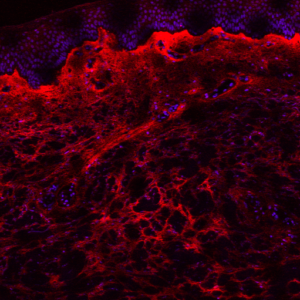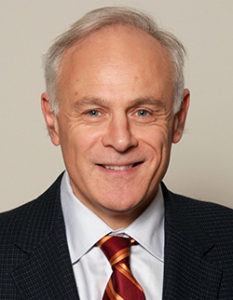
Scarring, or fibrosis, is normally a temporary part of the wound healing process. But in fibrotic diseases, the body fails to stop producing the thick and hard connective tissue that repairs skin and other organs after injury. In a recent study published in Nature Communications, Northwestern Medicine scientists discovered that a molecule called tenascin-C is responsible for driving that excess scar buildup.
The scientists focused on scleroderma, a rare autoimmune disorder also called systemic sclerosis that is characterized by progressive fibrosis in the skin and lungs. This study’s findings could inform future therapies for scleroderma as well as other fibrotic diseases, which can lead to serious organ damage and even death. Currently, there are no effective treatments to slow, stop or reverse the progression of fibrosis.
“If you have an injury in your liver from a virus or in the lungs from an infection, you might get limited and transient scarring, but that scarring resolves itself and the tissue regenerates,” said principal investigator John Varga, MD, John and Nancy Hughes Distinguished Professor of Rheumatology and of Dermatology. “When excessive tenascin-C is present, this repair doesn’t seem to happen.”
During fetal development, tenascin-C is expressed in the connective tissues that form the scaffolds for the body’s organs.

“In adults, this molecule has only a limited role,” Varga said. “But somehow it starts being made again in chronic fibrosis.”
In the study, he and first author Swati Bhattacharyya, PhD, ’05 GME, research associate professor of Medicine in the Division of Rheumatology, determined that levels of tenascin-C were markedly elevated in skin and lung samples from patients with scleroderma, suggesting that the molecule might be a biomarker of the disease.
“We looked at several independent patient cohorts to validate the findings,” Varga said. “Could we measure tenascin-C and use it to inform decisions about treatment?”
The research team also studied the disease in animal models without the tenascin-C gene. They discovered that mice lacking the molecule did not develop chronic fibrosis. The scientists then investigated ways to pharmacologically inhibit tenascin-C, because it is not possible to delete the gene in humans.
“We asked: How does the cell respond to this molecule? What is the sensor that tells the cell that there’s too much tenascin-c?” Varga explained. “We discovered that the sensor is the well-known immunoreceptor toll-like receptor 4, which is really exciting, because we have inhibitors that can block this receptor.”
In ongoing research, Varga’s lab is exploring novel compounds that can safely be given to patients to stop toll-like receptor 4 from responding to tenascin-c and driving fibrosis. The investigators are also collaborating with cardiologists and neurologists to see how tenascin-c is involved in repair after heart attacks and spinal cord injuries.
“This is potentially a very generalizable mechanism that may account for fibrosis and damage in many diseases in different organs,” Varga said.
This study was supported by National Institute of Arthritis and Musculoskeletal and Skin Diseases grants AR-42309 and K24 AR060297.
Varga was also recently elected to the Henry Kunkel Society, an association of distinguished clinical investigators primarily in the field of immunology.






